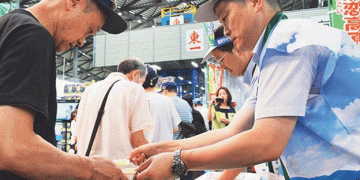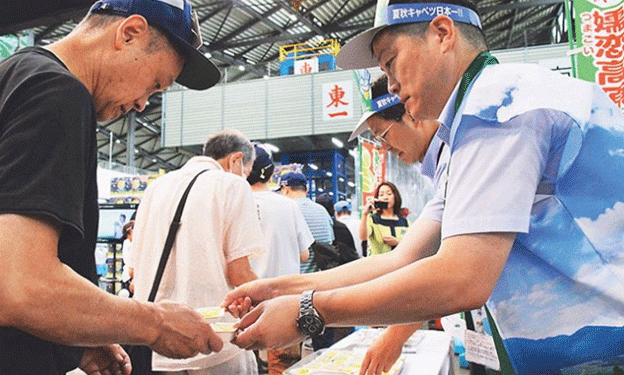On June 25th, JA Tsumagoi Village, known for producing the largest volume of summer and autumn cabbages nationwide in Gunma Prefecture, commenced major sales activities at Ota Wholesale Market in Tokyo ahead of the peak season. Spanning 2,880 hectares, equivalent to 600 Tokyo Domes, the village plans to ship approximately 18.5 million cases (10kg or 15kg each) of cabbage from June to October, aligning with last year’s figures.
According to JA officials, favorable weather conditions without frost during planting and adequate rainfall coupled with temperature increases have facilitated smooth crop growth. This week’s shipment volume averages around 50,000 cases per day, set to increase post-July to meet the peak demand of 200,000 cases daily nationwide from late July to August.
Recent years have seen challenging sales, necessitating three consecutive years of emergency supply adjustment projects by the Ministry of Agriculture. To address this, JA Tsumagoi Village has encouraged producers from the planting stage to level out production peaks.
As of June 25th, the national average price for cabbage, based on data from seven major wholesalers, stands at ¥74 per kilogram, marking a 10% decrease from the average year. Tokyo Seika highlighted that ample remaining stocks from late-producing regions like Iwate and Hokkaido have contributed to extended overlapping production periods. They expressed optimism that retail prices, which remained high, are stabilizing towards appropriate levels, anticipating increased consumer demand.
During sales activities, buyers were treated to tasting sessions featuring pickled cabbage. JA’s Chairman, Munehisa Kuroiwa, emphasized the impact of rising production costs and freight charges on local conditions, stressing the importance of coexistence and mutual prosperity among markets, wholesalers, and producers to safeguard Japan’s food security. He called for support in promoting sales efforts to sustain the market.
The strategic initiatives undertaken by JA Tsumagoi Village illustrate proactive measures towards stabilizing cabbage market dynamics amid seasonal challenges and varying demand. Collaboration across the agricultural supply chain remains crucial for ensuring sustainable food production and market equilibrium.


































